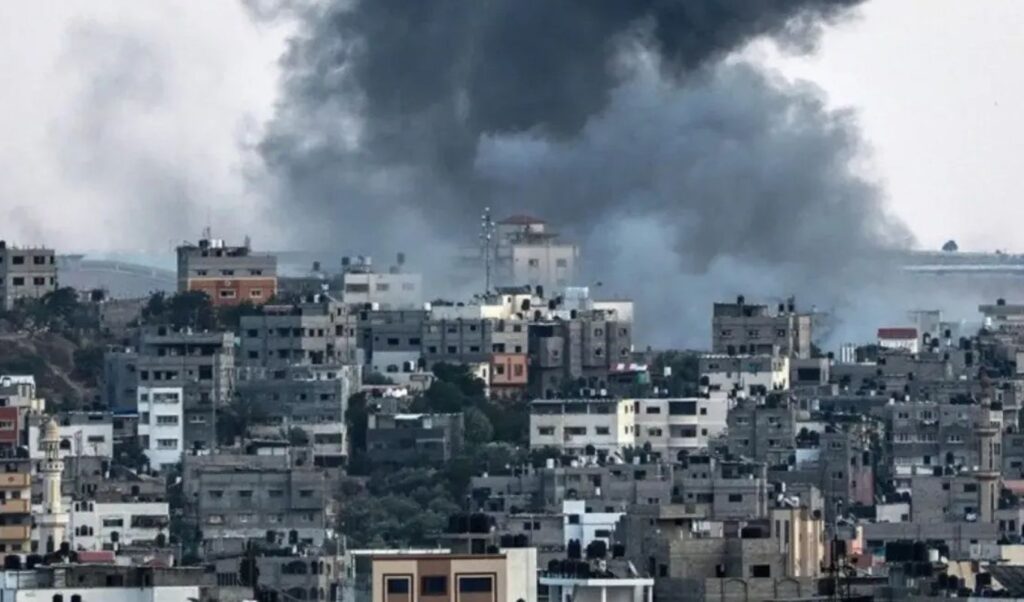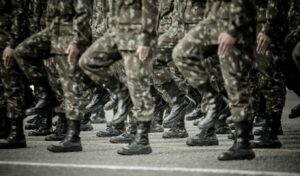The ceasefire in the Gaza Strip hangs by a thread, as the process of returning the remains of Israeli hostages progresses at a slow pace, causing unrest. Israel warns it will restart the war if Hamas fails to hand over all the bodies. Late Wednesday evening (15/10), two more Israeli bodies were returned, while Hamas claims it cannot locate others, intensifying tensions.
Hamas disarmament remains a major sticking point in negotiations to maintain the ceasefire, while disturbing images of Palestinian executions, allegedly accused as Israeli collaborators by Hamas, provoke international outcry. Israeli Prime Minister Benjamin Netanyahu and US President Donald Trump send a resounding message, warning that if the organization’s disarmament does not proceed, developments will resemble hell.
Gaza ceasefire on the brink of collapse: Israel threatens to restart war if Hamas doesn’t hand over all bodies
Meanwhile, Defense Minister Israel Katz ordered the leadership of the Israeli Defense Forces (IDF) to prepare a “comprehensive plan” of operations aimed at the “defeat” of Hamas in the Gaza Strip, in case war in the Palestinian enclave is reignited. Earlier, Kats held a meeting with the chief of general staff, General Eyal Zamir and other high-ranking officers.
According to a briefing from the Israeli Ministry of Defense, Katz ordered the preparation of a plan aimed at the “complete defeat of Hamas in Gaza, should it refuse to implement the (US President) Trump plan and if resumption of military operations is deemed necessary“. Earlier, Hamas assured that it has returned to Israel all the hostage bodies it could find.
Hamas “intends to honor the agreement” for the bodies of dead hostages
According to statements by senior American advisors on Wednesday, the Palestinian organization Hamas intends to honor its commitment to return hostage bodies from the Gaza Strip. The announcement comes at a critical juncture, as Israel threatens to resume military operations due to limited progress in body handovers.

“We continue to receive assurances from their side that they intend to honor the agreement. They want this process to be completed“, one of the advisors told reporters, under condition of anonymity.
Israeli intelligence services: Hamas has access to more hostage bodies
Israeli intelligence services, according to an Axios report, allegedly informed the United States that Hamas possesses more hostage bodies than it publicly claims. Citing two Israeli officials and one American, the report states that Israel expressed concerns to Washington that Hamas is not making the required effort to recover and return the bodies, noting that progress in the Gaza agreement cannot continue if its stance doesn’t change.
As an Israeli official reportedly stated: “We don’t see Hamas making maximum possible effort regarding the bodies“. An American official tells Axios that the US believes Hamas will eventually return all bodies, adding however that “this will take time“. “We will continue working on this, but we cannot allow the agreement to collapse“, the same official emphasized.
US: No Palestinian will be forced to leave Gaza during reconstruction
The United States clarifies that Palestinians will not be forced to leave the Gaza Strip during reconstruction, according to statements by a senior Donald Trump advisor, who spoke to reporters under anonymity. Trump’s plan to end the war explicitly provides that Palestinians will be encouraged to remain in Gaza. However, continued journalist questions about possible forced displacement pushed Washington to clarify its position.
It should be noted that in February, Trump had proposed the United States take control of Gaza and permanently relocate the entire population of the area. The proposal, although positively received by circles in Israel, was almost universally rejected by the international community, ultimately leading the American President to distance himself.
US–Israel plan to protect Palestinians from Hamas executions in Gaza
The United States is working with Israel to create a “safety zone” within Gaza areas that remain under Israeli control. This zone will offer refuge to Palestinian civilians who fear Hamas retaliation. The initiative is part of Washington’s response to the summary executions that Hamas allegedly carried out after last week’s ceasefire. According to reports, dozens of Palestinians – members of rival organizations or suspected of collaborating with Israel – were executed without trial.
Initially, Donald Trump appeared to justify the executions, characterizing the victims as “members of very dangerous gangs“. However, he later revised his stance and stated he was “examining the issue further“. The head of US armed forces in the Middle East took a stricter stance, demanding immediate cessation of Hamas attacks on “innocent Palestinian civilians“.

During a press briefing, a senior Trump advisor stated: “The United States is working with Israel to create space within the security zone, behind the ‘Yellow Line’, where those who feel threatened can seek refuge“. The so-called “Yellow Line” constitutes the boundary within Gaza to which the Israelis withdrew during ceasefire implementation, maintaining control of approximately 53% of the area.
“This is a response to reports of Hamas executions of opponents“, the same official added, welcoming Israel’s cooperation in the endeavor. “Israel is making serious efforts to support and protect those who wish to live peacefully and renounce Hamas“, he noted. No official timeline was given for the plan’s implementation, while Israel has not yet officially confirmed its participation.
Gaza demilitarization complex process
A senior Donald Trump advisor described Gaza Strip demilitarization as extremely complex, noting that the United States is working with Arab mediators to determine a realistic and secure implementation plan. “Right now we are in the phase of determining how such a thing can be achieved in a way that provides a sense of security for everyone“, the advisor stated during a press briefing. “It’s not realistic to believe that everyone will simply hand over their weapons and say ‘here you go’“, he noted characteristically, emphasizing the complex nature of the situation.
He added that even individuals who belong to or are associated with Hamas likely fear potential retaliation from other factions within Gaza, making demilitarization even more complex. However, as he mentioned, there is consensus among Arab mediators and the American side regarding the intention to continue efforts for a functional solution. “We are all working closely, with creativity and persistence, to find an outcome that will satisfy the basic goals of all parties“, he stated.
The American official also emphasized that there is unanimity among mediators that no reconstruction funding will be allocated to areas still controlled by Hamas. As he said, the first to be rebuilt will be the “Hamas-free, terrorism-free zones“, which – if the plan succeeds – will serve as a model for how all of Gaza could be shaped in the future.
“We will know within the next few weeks whether the appropriate demilitarization plan can actually be formulated“, the advisor noted, adding: “If Hamas attempts to regroup in a way that threatens Israel long-term, that would constitute a violation of the agreement. However, we are not yet at the point of considering that such a violation has occurred“.
Complaints over delays in humanitarian aid entry to Gaza
Israel currently permits humanitarian aid deliveries primarily through the Kerem Shalom crossing (south). However, humanitarian organizations complain about delays due to administrative reasons and security checks. According to the United Nations and World Health Organization, Israel has allowed humanitarian and medical-pharmaceutical aid to enter in recent days, particularly cooking gas for the first time since March, as well as tents for the displaced, fresh fruits and vegetables, frozen meat, flour, and medicines.

In the Gaza Strip, residents facing hunger often stop aid trucks and some take food, hindering coordinated distribution to communities most affected, according to a humanitarian organization source.
“Place of skulls” – Gaza described by those returning
Returning to the rubble of what were their homes in Gaza City, many residents set up tents or makeshift shelters among the ruins, AFP cameramen recorded. “They threw us onto the street. There’s no water, no food, no electricity. Nothing. All of Gaza City became rubble and ashes“, said Mustafa Mahram. “Nothing remains standing in Gaza City anymore. No trees, no buildings, no human beings, no life. Only destruction“, said another resident, Yussef Jonda.




